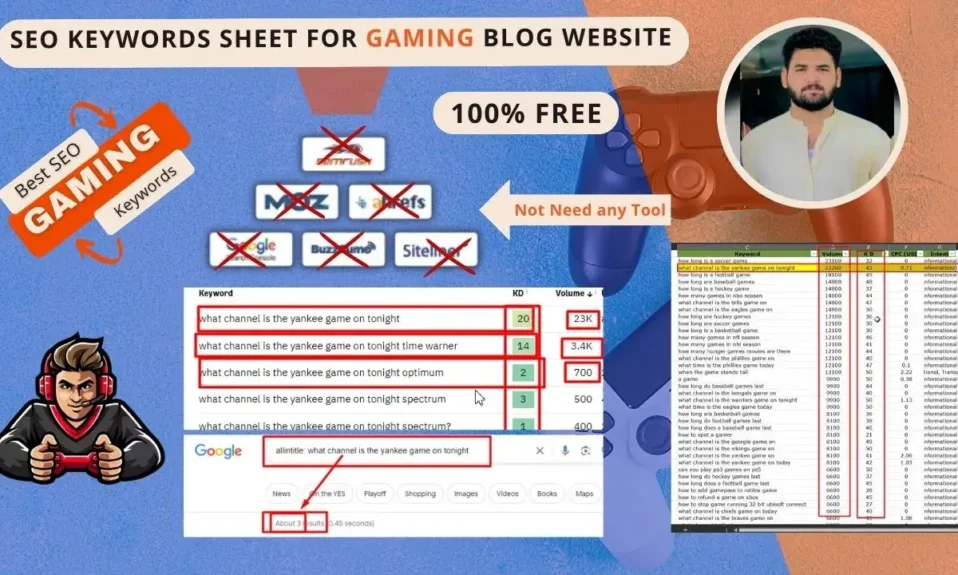
After I began my journey into semantic web optimization, I found that there are lots of ideas that I wanted to know earlier than getting began.
However, I additionally discovered that lots of the sources on-line had been painfully obscure. I usually learn a sentence greater than as soon as and got here out with both a hazy understanding or worse but, a couple of potential clarification.
Consider me, nothing will confuse you greater than having a couple of option to interpret a sentence.
by way of GIPHY
Most of the time, the rationale for this confusion was I didn’t have the mandatory vocabulary to pinpoint what the author meant.
So, after working arduous to know semantic web optimization, I made a decision to create content material that spells every little thing out in easy English.
Additionally…
This put up is a deviation from my ordinary content material, as I typically attempt to give sensible suggestions and techniques in my weblog posts. However, since I used to be confused, I assume others are too. That is my try at supplying you with a transparent understanding of some vital ideas.
And, that brings us to the topic of this put up.
If you happen to had been questioning what a Google entity actually is, this put up is for you.
In it, I hope to make clear:
- What an entity is
- What the assorted element components are
- What the Matter Layer is
When you perceive these factors, not solely will your semantic web optimization geek mates love you, however you’ll have each the information and vocabulary to analysis the subject by yourself. And since entity web optimization isn’t only a few techniques and finest practices, having an actual understanding can actually enable you get extra site visitors.
by way of GIPHY
So, as we dive into the subject, let’s first perceive why entities are vital to search engines like google.
What Are the Advantages of Google Entities?
Entities are vital as a result of they assist search engines like google categorize info in a means that helps them:
- Perceive person queries
- Reply these questions
So, to know this, put your self within the sneakers of a search engine. Engines like google are designed to resolve an issue. How do you manage info on the net in a means that’s simply searchable by its customers? How do you convey the proper content material to reply a searcher’s queries?
With a purpose to higher clear up these issues, search engines like google moved over from lexical search engines like google to semantic search engines like google.
Lexical search is the place the search engine finds key phrases in search queries and matches them with these key phrases in net content material.
Semantic search then again is an try to enhance the accuracy of search outcomes by trying to know the search intent by understanding the that means of the phrases within the search question and matching it with content material that actually solutions the search question.
To do that Google’s pure language processing algorithms are designed to know human language.
In a semantic search engine, an entity is a significant unit for organizing info. The rationale for that is to ensure that Google to ‘perceive’ the search question and match it up with the proper content material, Google wants to know what entity the search is about and the way it pertains to different entities. Sadly, I gained’t be capable to clarify how that works on this put up however check out the semantic triples part in my weblog put up on semantic search.
What Are Google Entities?
Entities as outlined by Google are “A factor or idea that’s singular, distinctive, well-defined, and distinguishable.” These entities are sometimes characterised by title, sort, attributes, and relationship to different entities.
Now with that definition in hand, you could be questioning, certainly an entity refers to an object in the true world? How do entities embody ideas?
If you happen to requested that query, I’d be inclined to agree with you, we typically affiliate the phrase ‘entity’ with issues in the true world.
However, as I discussed earlier than, the objective of Google entities is to arrange info, and entities are significant items for organizing info. From the angle of organizing info, there isn’t any actual distinction between summary nouns (equivalent to ideas, colours, and emotions) and concrete nouns (or real-world issues).
Google, due to this fact, treats them in the identical means because it treats real-world entities.
The Anatomy of a Google Entity
If you happen to had been to take a look at a Google entity by a (metaphorical) microscope, what would you see?
by way of GIPHY
Entities are made up of various components and understanding every half will enable you to see how they relate to at least one one other. Understanding their relationship will enable you create content material that Google ‘understands’ and doing that might enable you to rank greater and get extra site visitors.
The very first thing to know is that entities exist in a catalog referred to as a Information Graph.
What’s the Google Information Graph?
Google’s Information Graph is a repository of data used to retailer entities along with their descriptions and attributes. What’s extra, the Information Graph additionally buildings the entities in a means that makes connections between entities and ideas. Understanding this construction is a key idea in understanding Google entities (extra on this later).
Google’s Information Graph will get all of this entity info from sources equivalent to:
- The CIA World Factbook
- Wikipedia
- Wikidata
Google additionally will get entity info from the open net.
This implies Google will get entity definitions, classes, entity varieties, entity properties, and extra from these sources. Google then shops all of that info in structured kind within the Information Graph.
Now that you’re conversant in the setting by which entities exist, let’s study the entities themselves.
Entities and Their Properties
As I discussed above, entities are made up of element components. Let’s study these components individually:
1. Distinctive Identifier
Merely put, an entity information base must have a option to establish every separate entity. This implies every entity wants its personal distinctive id.
To see a novel identifier within the wild, let’s check out Google’s Information Graph API explorer.
Within the screenshot beneath, I’ve typed the entity, John Lennon, into the question subject.
img src=”https://www.similarweb.com/weblog/wp-content/uploads/rank-ranger/blog_7/google-api.jpg” alt=”Google’s Information Graph explorer with ‘John Lennon’ within the question subject”/>
If you happen to scroll down you’ll see “@id”: “kg:/m/01vsl3_”,

That is the distinctive identifier. You’ll discover that the distinctive identifier isn’t the entity’s title. It’s an identifier that’s distinctive and machine-readable.
Now you could be questioning why Google doesn’t simply use the entity’s title. The reason being many entities share the identical names. The identifier, then again, is exclusive to every entity.
2. Entity Title
Every entity has a reputation. As I discussed above, not like distinctive identifiers, entities could share names. As an illustration, Taj Mahal is each a historic constructing and a musician.




What’s extra, some entities could be identified by a couple of title. For instance, typing Louis Armstrong or Satchmo into Google will convey virtually equivalent outcomes.
These various names are thought-about aliases.
Now, you could be questioning…
If every entity has a novel identifier, why do they want names?
The entity title is vital as a result of, although the distinctive identifier is a means for the search engine to establish the entity, the title is how an precise particular person will establish the entity. Individuals will embody the title of the entity in search queries in addition to in content material.
Google then again will see the title in a search question or in a bit of content material and based mostly on context try to match the title with the entity within the Information Base.
As you possibly can see within the screenshot beneath, the entity title is John Lennon (in case you hadn’t guessed. 😉)




If you wish to see the entity title within the wild, sort it into Google and if Google is assured it is aware of the entity, Google will show the title on the prime of the entity’s Information Panel.



3. Entity Sorts
Entities are grouped into entity varieties. Entity varieties are merely classes that group entities with related properties collectively.
Typical entity varieties are folks, locations, issues, or films.
So, wanting again in Google’s Information Graph API explorer, you possibly can see the entity sort by in search of “@sort”. (Apparently, to Google, John Lennon is each a factor and an individual.)



4. Entity Attributes
Entities are typically characterised by units of attributes. Every entity sort will sometimes have its personal units of attributes.
So for example, entities categorized as folks will sometimes have attributes equivalent to date of start, members of the family, top, and so on.
Locations then again might need latitude, longitude, nation, postal code, and so on. as attributes.
Typically these attributes are entities in their very own proper. As an illustration, nation. When this occurs, these attributes are usually not handled as attributes, however as associated entities.
To see attributes within the wild, let’s check out John Lennon’s Information Panel.



As you possibly can see, the Information Panel tells you:
- When and the place he was born
- When and the place he was assassinated
- His spouses
- His kids
The phrases in blue are attributes which are additionally entities in their very own proper. If you happen to click on on any of them Google will redirect you to that entity’s SERP.
5. Associated Entities
Associated entities describe how entities relate to one another. For instance, to Google, each John Lennon and the Beatles are entities which are related to each other. The connection is John Lennon is a member of the Beatles.
To see the connection for your self, sort ‘the Beatles members’ into Google.




Within the screenshot above you possibly can see all of the entities that Google considers to be members of the entity the Beatles.
Google makes use of these entity relationships to reply user-generated questions. So for example, within the instance above, by typing ‘beatles members’ into Google, Google understands that the person is in essence asking ‘Who’re the members of the Beatles?’.
Google already ‘understands’ the connection between the Beatles and its members and is ready to floor that info within the SERP function above.
Understanding how entities relate to one another is tremendous highly effective info with regards to web optimization. By together with associated entities in your entity content material, you’ll be constructing context for Google to know what entity your content material is about.
How Entities Have Modified Search
By utilizing entities as a unit for categorizing info, and by organizing entities into relationships, Google is ready to create a wealthy search expertise. This implies whenever you search Google, you usually see SERP options that embody associated entities and entity attributes…
What’s extra, this has given Google the flexibility to convey brief solutions to customers’ questions. You’ll be able to usually see these solutions featured in SERP options.
As a aspect level, since Google presents entity info in SERP options, monitoring SERP options is essential to your web optimization.
As an illustration, if I sort the phrase ‘climate’ into Google, Google is in a position to determine that I’m requesting details about the entity ‘climate’.
Google then appears for the reply to this query by websites in its index. Google then compiles the knowledge in a SERP function.



Now as it’s, that is fairly spectacular, however, Google has taken this understanding a lot additional by creating the subject layer.
What’s the Matter Layer?
In 2018, Google added what they referred to as the Matter Layer to the Information Graph.
Now, as I discussed above, Google was already capable of join entities and convey them into the SERPs in SERP options.
So what did Google add by creating the Matter Layer?
The Matter Layer was designed to assist Google customers by search as a journey moderately than solely a means of getting fast info. In different phrases, there are matters which are too complicated to absorb shortly. These matters would possibly take many searches over a number of days.
The subject layer was designed to assist customers discover a subject by offering methods to maintain monitor of their searches and by suggesting issues to discover subsequent.
It is a new paradigm in how Google helps its customers. Google was nice at answering questions. Google can now assist customers alongside larger search journeys.
With a purpose to do that, Google understands that by arranging content material into a subject/subtopic hierarchy.
To see this for your self, check out the outcomes web page for the search time period ‘advertising’.




As you possibly can see within the Information Panel, Google presents subtopics equivalent to:
These are all subtopics inside the normal matter of promoting. What’s extra, Google additionally suggests different associated searches together with:
- Web advertising
- Advertising technique
- Gross sales
- Social media advertising
Once more, these are all methods to rearrange Google’s entities into matter/subtopic hierarchies.
So, if advertising is the final matter, then web advertising, advertising technique, gross sales, and social media advertising are all subtopic entities.
Understanding Entities – The place to Go From Right here
Hopefully, this put up has shed some gentle on the subject of entities in search. Though I’ve not included any sensible entity web optimization suggestions or methods, I hope you’ll have a newfound understanding of the subject which offers you the information to analysis and perceive what to do subsequent.
The best way I see it, information is energy if you determine methods to use that information. So if you wish to take your information of semantic web optimization technique to a spot the place you should use it to create a semantic web optimization technique, the subsequent step is knowing the distinction between key phrases and matters.
#Google #Entities #Full #Information











